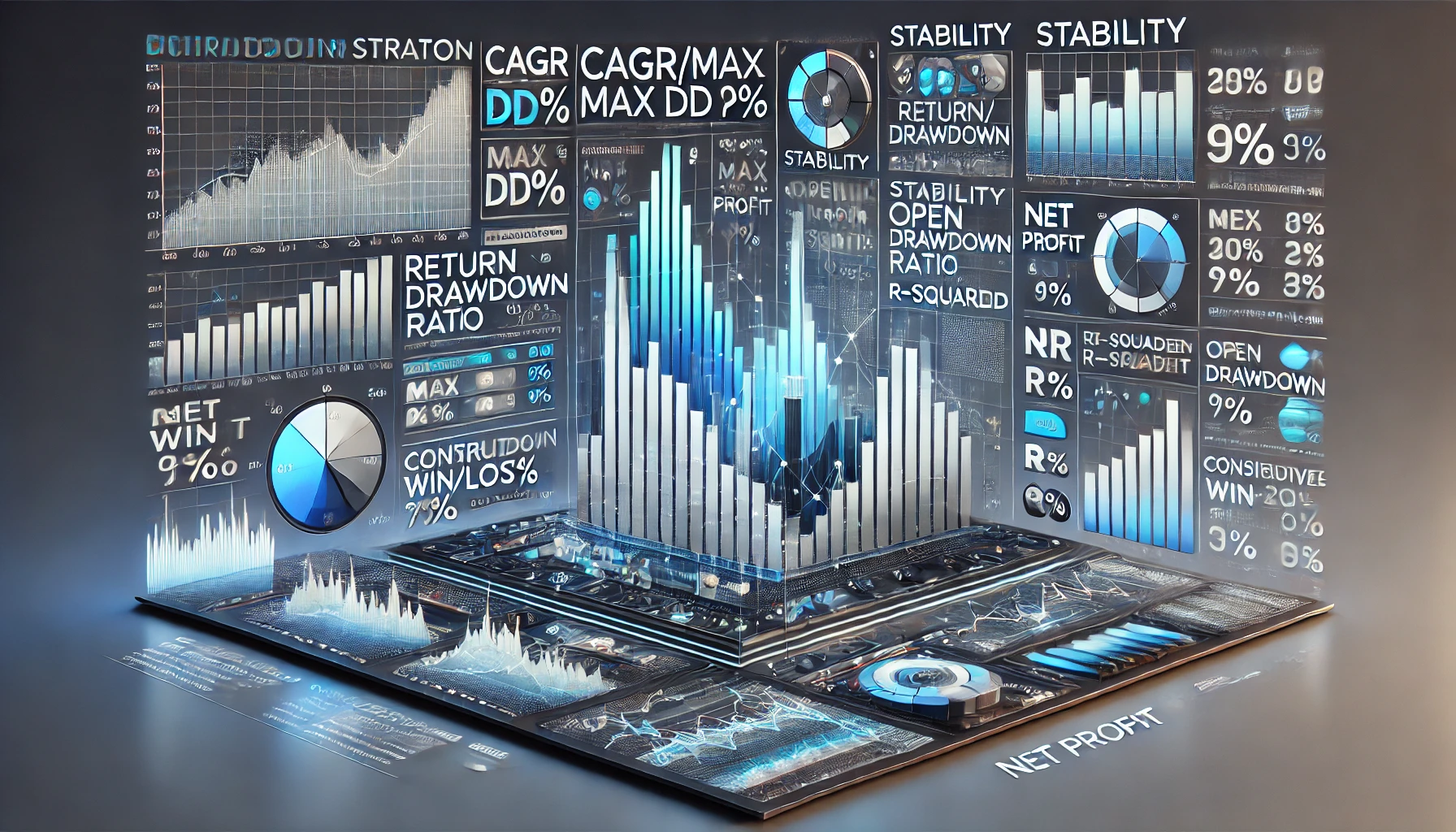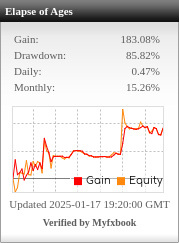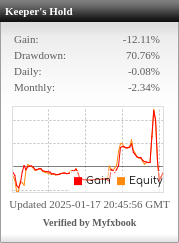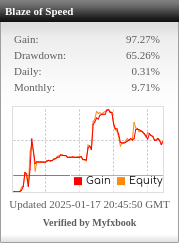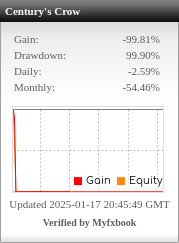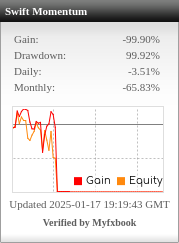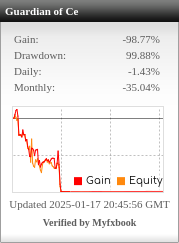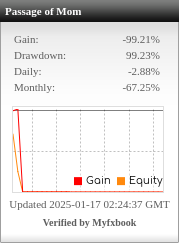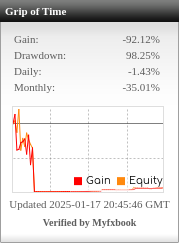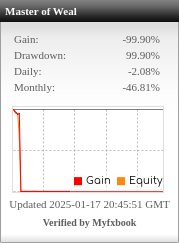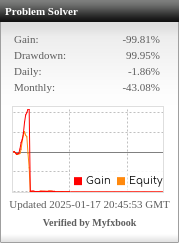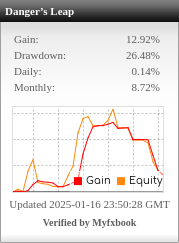Table of Contents
- 1. CAGR/Max DD% (Priority: High)
- 2. Sharpe Ratio (Priority: High)
- 3. Profit Factor (Priority: Medium-High)
- 4. Return/Drawdown Ratio (Ret/DD) (Priority: Medium-High)
- 5. Stability (Priority: Medium)
- 6. Open Drawdown % (Priority: Medium)
- 7. Max Drawdown % (Priority: Medium)
- 8. Net Profit (Priority: Medium-Low)
- 9. R-Squared (R²) (Priority: Low)
- 10. Consecutive Win/Loss Trades (Priority: Low)
- Suggested Approach for Phase 1 Portfolio Creation:
In phase 1, which says to create 4-6 portfolios, in this part, what should I filter and rank them by? 1. Profit Factor 2. CAGR/Max DD% 3. Sharpe Ratio 4. Return/Drawdown Ratio (Ret/DD) 5. Stability 6. Open Drawdown % 7. Max Drawdown % 8. Consecutive Win/Loss Trades 9. Net Profit 10. R-Squared (R²)
To build the 4-6 portfolios in Phase 1, focusing on filtering and ranking the strategies effectively, I would suggest using a weighted approach to emphasize the metrics that align with both profitability and risk management for long-term stability. Here’s how to prioritize and filter the metrics:
1. CAGR/Max DD% (Priority: High)
- Why: This is one of the most crucial metrics because it shows how well the strategy performs in terms of growth while managing risk. Higher values mean you get better returns for each unit of risk.
- How to Filter: Select strategies with a CAGR/Max DD% > 1 as a minimum requirement, and prioritize strategies that have values significantly greater than 1 (e.g., >1.5 or >2) for better risk-adjusted returns.
2. Sharpe Ratio (Priority: High)
- Why: The Sharpe Ratio indicates risk-adjusted returns. A Sharpe Ratio > 2 is generally considered excellent, as it means the strategy is delivering high returns for the level of volatility/risk involved.
- How to Filter: Filter out strategies with Sharpe ratios below 2. Rank remaining strategies by Sharpe Ratio as a second key factor.
3. Profit Factor (Priority: Medium-High)
- Why: The Profit Factor compares gross profits to gross losses. A Profit Factor > 1.5 indicates that for every dollar risked, the strategy earns at least 1.5 dollars.
- How to Filter: Filter strategies with a Profit Factor above 1.5 and rank them to ensure a healthy balance of profits vs losses.
4. Return/Drawdown Ratio (Ret/DD) (Priority: Medium-High)
- Why: This metric reflects how much return you are getting for each unit of drawdown. A higher value indicates better performance relative to risk.
- How to Filter: Ret/DD values should be high (>2), and strategies with strong Ret/DD ratios should be given more weight in the ranking process.
5. Stability (Priority: Medium)
- Why: This measures the consistency of the equity curve. Stability above 0.8 ensures smoother performance with fewer wild swings.
- How to Filter: Filter for strategies with Stability > 0.8 and rank by Stability to ensure you are selecting smooth performers.
6. Open Drawdown % (Priority: Medium)
- Why: Open Drawdown % indicates how much capital is at risk while a trade is active. Keeping this low ensures that you don’t have a lot of capital exposed to ongoing risk.
- How to Filter: Select strategies with Open DD < 15% to avoid excessive risk during open trades.
7. Max Drawdown % (Priority: Medium)
- Why: Max Drawdown % shows the largest peak-to-trough drop in equity. Lower drawdowns indicate less capital loss during downturns.
- How to Filter: Set a maximum acceptable drawdown threshold (e.g., Max DD < 20-25%), and give higher preference to strategies with lower Max Drawdowns.
8. Net Profit (Priority: Medium-Low)
- Why: Net Profit is important for absolute returns but should not overshadow risk-adjusted performance metrics.
- How to Filter: While this metric should not dominate, it’s important to ensure the strategies are delivering consistent profits. Rank by profit only after other risk-adjusted metrics.
9. R-Squared (R²) (Priority: Low)
- Why: R² measures the strength of the trend in the equity curve. While useful, this can be less relevant for short-term portfolios.
- How to Filter: R² should be considered, but not weighted too heavily in early portfolio building stages.
10. Consecutive Win/Loss Trades (Priority: Low)
- Why: This is more of a psychological metric that shows how many wins or losses can occur consecutively. While useful, this is not a key metric for filtering.
- How to Filter: Use this as a final check to ensure your selected strategies don’t have extreme streaks of losses or wins, which could indicate volatility.
Suggested Approach for Phase 1 Portfolio Creation:
- Primary Filters: Start by filtering with CAGR/Max DD% > 1, Sharpe Ratio > 2, Profit Factor > 1.5, Stability > 0.8, and Open Drawdown < 15%.
- Ranking: Once you’ve applied these filters, rank the remaining strategies using CAGR/Max DD%, Sharpe Ratio, and Ret/DD as your top three criteria.
- Secondary Filters: As a secondary consideration, check Max Drawdown %, Net Profit, and Stability to ensure balanced strategies.
- Final Checks: Lastly, apply Consecutive Win/Loss Trades and R² to fine-tune for consistency and smoother equity curves.
This structured approach will allow you to maximize the robustness and profitability of your strategies while controlling risk and volatility.

